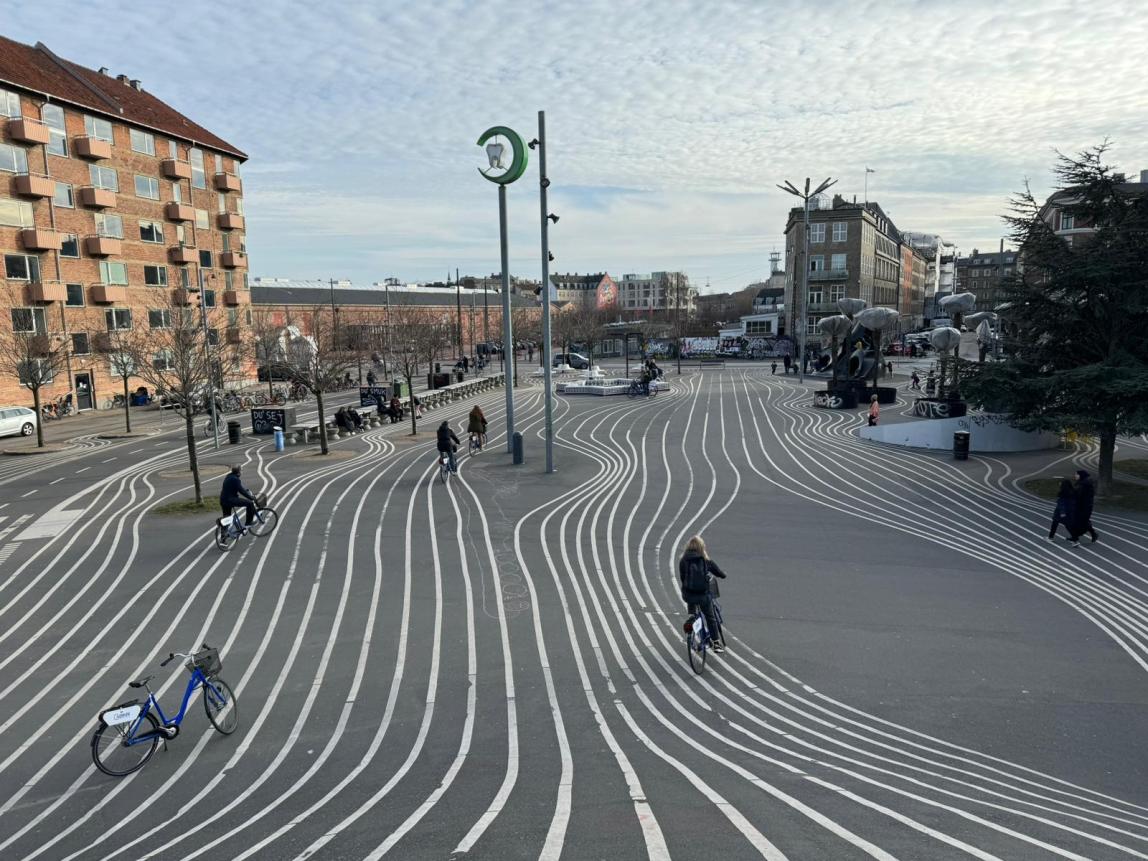
The city belongs to everyone
10/09/2024 - 11:04
- Uncover
Author: Peter van der Aalst is a member of the management team at Academy for Leisure & Events and is pursuing a Professional Doctorate on utilising urban or street culture to develop future-proof cities.
A Dutch-Belgian delegation specialising in sport and vitality recently visited Copenhagen. Representing Breda University of Applied Sciences, I participated in this delegation to strengthen our international network. Moreover, the programme aligned seamlessly with my professional doctorate studies, which focus on the role urban or street culture can play in the development of future-proof cities. So how do you ensure that leisure activities contribute to a vital, inclusive and attractive city for residents and visitors?
Smart framing, attentive listening, and allowing scope
Most of Copenhagen's population are between 20 and 40 years old, which has effects on the demand for sports facilities. Teenagers, in particular, often seek out less structured sporting activities. Thomas Bach, director of sport at Copenhagen City Council, therefore prefers to speak of 'activities' rather than 'sports', hoping to broaden the policy landscape. This resonates with part of the target group of young people, who do not immediately identify with the term 'sport' and who gather at venues where physical activities blend seamlessly with cultural expressions. Using a different word to create policy scope, it seems like a minor intervention, but it can have substantial consequences in the long run. As I have to make interventions within my professional doctorate to initiate innovation processes in the field, this was a valuable lesson.
The national government organisation Lokale og Anlægsfonden is a foundation that develops projects that offer new solutions for the leisure lives of Danes. These must have strong local significance as well as national relevance. Local developers are supported throughout the entire process - from brainstorming to advice and final implementation. The key is to engage with the intended actual users, especially also current non-users within local communities. Municipalities and sports clubs usually initially come with a financial question for a new sports facility, the counter question is then, “Why develop it this way, and what neighbourhood problem will it address?”. Thus, when developing facilities, the creation of social areas where people can just chill out, also turns out to be crucial to ultimately attract the intended users. In essence, “If you build differently, you get different results”. That was the second eye-opener for me: it is crucial to also research why people do not use existing facilities or no longer use them, and use the findings to develop facilities that are more inclusive.
Appealing examples
In Copenhagen, Lokale og Anlægsfonden was involved in the completion of the climbing hall Blocs & Walls, the street culture-oriented StreetMekka house, the Martial Arts house and the outdoor sports facilities or 'urban playground' on the roof of a car park in Nordhavn. The Superkilen public park in the Nørrebro district is a kilometre-long park that was designed with input from the diverse local communities and embraces elements from all cultures involved. The aim is to bring immigrants and local population groups together, contributing to tolerance and cohesion in one of Denmark's most diverse and socio-economically challenging neighbourhoods. Superkilen is also a major tourist attraction.
Another example of the creative use of public space is URBAN13, a social business in the Frederiksberg district of the city that aims to provide space to bottom-up initiatives from the neighbourhood and increase neighbourhood safety. URBAN13 is situated in a former car park beneath two bridges, splitting the neighbourhood in two parts, each with completely different populations. Driven by its own initiative, the organisation has transformed this space into a multifaceted hub. It now houses a venue, shared office space, catering outlets and a range of street sports amenities – all freely accessible. In this way, a natural and easily accessible meeting point has been created, where the daily activities cater to diverse target groups. These target groups are explicitly encouraged and supported to develop their own initiatives. For me and the other participants on this trip, URBAN13 was yet another inspiring example of how to involve diverse communities in designing a vital, inclusive and future-proof city. Which happens to be the very essence of my Professional Doctorate track: how can you harness urban or street culture to develop a future-proof city, in such a way that it strengthens both the urban scenes and the city as a whole?
This article was published in Uncover Magazine - Internationalisation. You can read the complete magazine via this link.